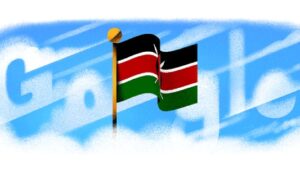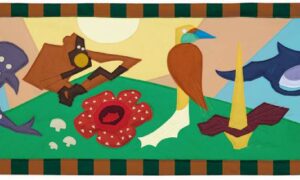For Muslims worldwide, breaking the fast with iftar, the evening meal, is a significant aspect of Ramadan. Breaking fast and getting together for a shared meal is a time for joy, prayers, and togetherness. The many different cuisines and cultures that Muslims follow throughout the world are reflected in the traditional iftar meals. Desserts are especially valued when fasting for iftar since they offer an excellent way to break the fast. Many countries’ traditional iftar desserts, which range from rich pastries to light puddings, are prized for their unique flavors and rich histories.
Exploring Traditional Desserts for Iftar
1. The Middle East’s Kunafah
Kunafah, a popular dessert in the Middle East, is a dish consisting of shredded phyllo dough topped with almonds or sweet cheese, soaked in syrup, and baked until it turns brown. It is commonly consumed on special occasions and during the holy month of Ramadan.
2. Baklava (Middle East, Greece, Turkey)
Baklava is a traditional dessert in many Middle Eastern and Mediterranean countries. It is made of layers of filo dough filled with chopped nuts and sweetened with syrup or honey. It is usually served during the holy month of Ramadan and other celebratory occasions and is a symbol of hospitality.
3. Sholeh Zard (Iran)
Sholeh Zard, a fragrant rice pudding with a hint of rose water and saffron infusion, is topped with cinnamon and slivered almonds. This dessert is a mainstay of Ramadan and other celebrations in Iran.
4. Lapis Legit (Indonesia)
Lapis Legit, occasionally referred to as Indonesian Thousand Layer Cake, is a rich and luscious cake composed of layers of buttery cake that has been seasoned with cloves and cinnamon, two common Indonesian spices. The delicate dish is very popular, especially during Eid al-Fitr and Ramadan celebrations.
5. Phirni (Pakistan, India)
Traditionally, cardamom, saffron, almonds, milk, sugar, and rice meal are used to make phirni, a delicious rice pudding. People consume this meal all over Pakistan and India during the holy months of Ramadan and Eid.
6. Qatayef (Middle East)
Qatayef are pancakes stuffed with dates, almonds, or sweet cheese. Usually, these pancakes are folded, baked, or fried. They are a popular delicacy that are usually eaten in the Middle East during the holy month of Ramadan and other happy occasions.
7. Ma’amoul (Middle East)
Ma’amoul are shortbread biscuits that are filled with dates, almonds, or sweetened semolina and usually flavored with orange blossom or rose water. They are a type of dessert that is widely eaten in several Middle Eastern nations during the holy months of Ramadan and Eid.
8. Revani (Middle East, Greece, Turkey)
Revani, sometimes called Basbousa or Hareeseh in some places, is a syrup-soaked semolina cake flavored with orange blossom or rose water and topped with nuts. This is a popular dish that is eaten in Ramadan.
9. Tufahija (Middle East, Balkans)
A classic dessert from the Middle East and the Balkans, tufahija is created with poached apples that have been filled with walnuts, sugar, and cinnamon, and then simmered in sweet syrup. It’s enjoyed at celebrations, including Ramadan.
10. Lokum (Middle East, Balkans, Turkey)
Turkish lokoum are juicy, essentially sweet cubes produced from a gel of flour and sugar. The classic variety of lokum, made with plain jelly and pistachios, is still the most well-liked in Turkey. Other classic flavors include rose water, lemon, bergamot orange, mastic, and mint. There are several variations, but some of the components include dates, walnuts, hazelnuts, and cinnamon. In a traditional Turkish home, these cubes are offered with tea or coffee after every meal. Bekir Affendi, a candy maker who settled in Istanbul in 1777, was originally from Anatolia.
- Midwestern State Wins 2025 NCAA DII Men’s Soccer Championship Final - December 15, 2025
- Jerry Rice Award History: Every Winner of the FCS Freshman Award - December 13, 2025
- When Do New Episodes of Taylor Swift’s The End of an Era Drop? | Schedule, Dates & Updates - December 13, 2025





